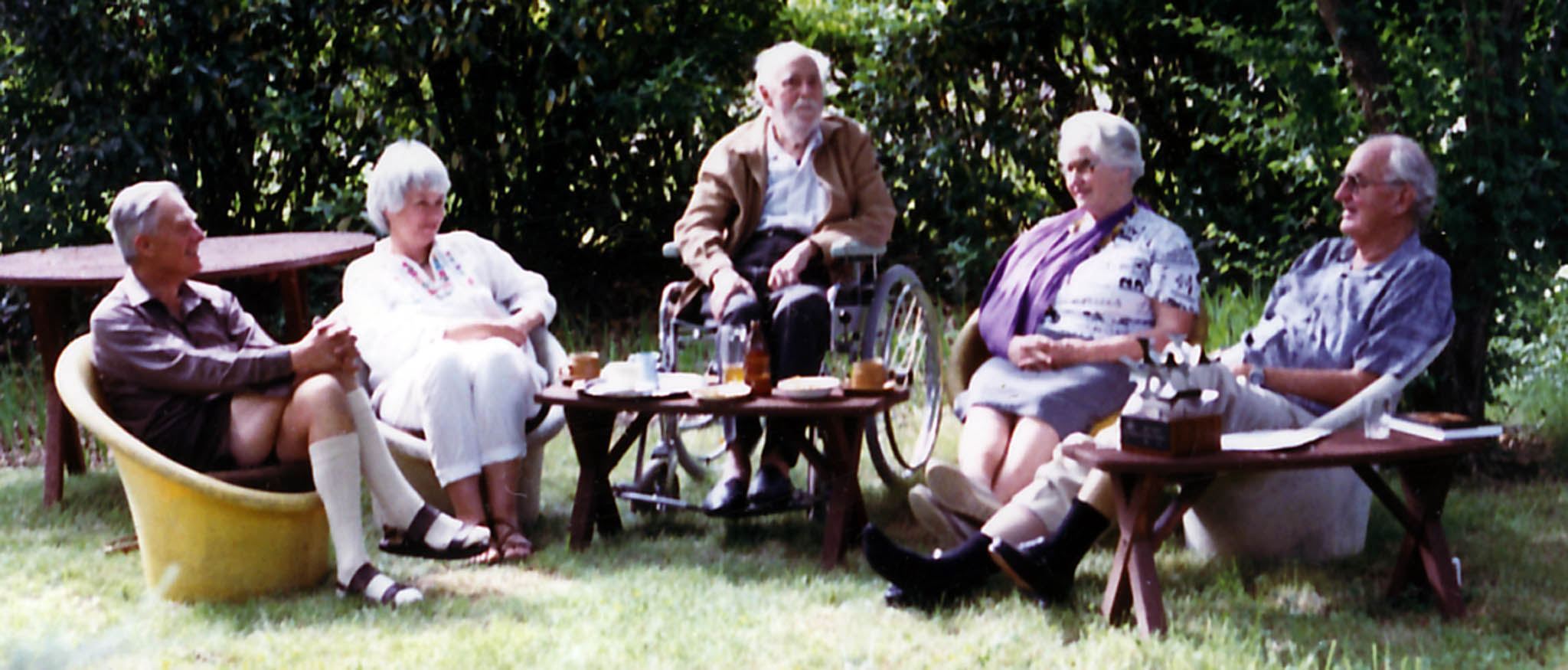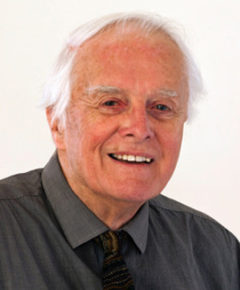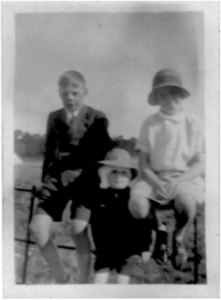In retrospect I don’t feel I could claim any significant event or spark of interest which led me into the world of design other than slowly realising that my high school recognised talents in physics, art and geometry, seemed to point toward architecture as a career.
In collating this portfolio of my work, however, I have come to realise that if there had been a course in design at the Manchester School of Art in 1940 then that may have attracted me rather than architecture because a quick glance at the many fields of design I have worked in during my life have ranged rather widely, indicating that design itself is an all-embracing and fundamental activity to many, if not all, of human aims.
So architecture became my springboard into design and has served me well as a core discipline applicable to a growing number of peripheral design areas. Architecture has one strict disciplinary factor – a large element of risk with consequences not present with many other areas of design expression.
The art and science of designing is to me a challenge to create an answer to a need and the process is every bit as exciting as the end result. It is governed largely by an opportunity presented to you by somebody and whether it comes with a fee or is pro bono is really immaterial – the challenge is the excitement of the chase for truth in the outcome – rather like designing and making a motor cycle with the end result being the first time the engine roars into life. I have often said that if I could have my life over again I would have no hesitation in being a designer again, based on past experience – it has resulted in great joys – but I must admit, some disappointments, often arising from other sources.
In retrospect I have had no time for following any particular fashion or trend. I have always believed that any end result has a truth or honesty about it that is a reflection of the original brief – which is why the brief must be carefully thought out if the right end is to be achieved.
In 1965 I attended a course in Design Methodology in Bristol, led by an engineer, Edward (Ted) Matchett who has influenced me in my thinking ever since with his definition of what is good design –
“Good design is always the optimal result of the sum of the true needs in a particular set of circumstances” 1
Fundamentally, an interest in architecture must inevitably include an interest in furniture for the very simple reason that buildings within which human beings live, work and play would not be functional in any way if there were no items of furniture which connect the human activities with the building – its protective shell.
Furniture and furnishings are very similar nouns, broadly meaning all the loose and fixed items of furniture, equipment, machinery, light fittings, handles and knobs and countless other miscellanea which humans have conceived to live and work with inside buildings which protect them all from the weather. Every item is necessary at intermittent times to assist humans to achieve their objective within any particular building, from opening doors and windows which enable us to create usable spaces of various sizes to work effectively, to installing fabrics such as curtains and carpets to soften the hard and reflective building shells in an attempt to efficiently hear, communicate and reduce heat losses.
It is not surprising then that my interest in architecture automatically included all these accoutrements, yet expanded to environmental control such as ventilation and acoustics – how to effectively prevent desirable sound in one room becoming ineffective noise in adjacent rooms (the subject of my final thesis in 1945 which earned a Distinction).
1(See also Matchett’s Legacy < http://www.edwardmatchett.co.uk/index.html?page=/FDM.html> Well worth exploring))
All of these items have to be designed and integrated in a harmonious way so that any building can perform effectively for all its inhabitants, so my interests naturally extended well beyond architecture. This is why I was so attracted by Fred Ward’s invitation to join him in his activities in the ANU Design Unit – which presented a wonderful opportunity to me to practice Total (or integrated) Design – and where better than in an enlightened university like the ANU where so many people were pushing back the boundaries of knowledge in so many fields of human endeavours.
That lofty concept supplied my hungry design mind with countless needs to be resolved in a wide variety of problem solving ways and manufacturing techniques.
But forward thinking requires mental acceptance by the designer that others are usually involved in the design process who do not necessarily see things in the same way. They are often administrators who talk in terms of dollars and budgets, but rarely in concepts of how to do it in a more effective way – of value for money and the betterment of society. Of course their thinking is coloured by their training and their experience, but quite often their major criterion becomes the up-front cost with little or no thought as to the running cost. (this is a big topic – see my comments about carpet v. vinyl tiles in lecture theatres, see GENERAL OVERVIEW).
Back to furniture – I cut my teeth during my student days by persuading Mum and Dad to let me design a wooden fireplace surround in our living room in Langdale Avenue (see 1945 FURNITURE)- my first experience of having a real client and a budget).
Then I came to Australia in 1947 and started on my series of DIY architectural researches which have lasted me for the rest of my life and which naturally included furniture. My first two houses (OB1 and OB2) were in the quarry at DeeWhy and various furniture items were made on the spot to meet my immediate needs which now included others – my wife Hilary in 1954 and our first son Adam in 1956.
It was at the second DeeWhy house (OB2) that the concept of the NSW Chapter of the Society of Designers for Industry was inaugurated around 1955.
Then Fred Ward appeared coincidentally (like minds obviously attract) and we were all off to Canberra to join him at the Australian National University and enter a new phase of Total Design which developed in the ANU Design Unit, opening up a designer’s dream for me (see ANUDU Total Design overview).
On leaving ANU in 1977 I opened my office as Design Associates in the old flour mill I renovated in Queanbeyan (Byrne’s Mill) while still building my OB4 house at Little Burra.
I had a commission at the time to design half of the furniture for the new High Court in the Parliamentary Triangle and also to make the sculptural coat of arms for Court 3 and coordinate the design and making of the coats of arms for the other two courts.
It was at Byrne’s Mill that I inaugurated the New Millwrights group of young design professionals in an attempt to educate the public toward understanding the consequences of the oil scare of around 1973 and how they could retrofit their houses to save energy.
That was really the start of my interest in retrofitting houses leading to Maxine and I moving to our ‘retirement’ house in Mawson in 1991 and retrofitting it with over 20 concepts for energy saving and simpler living. My designs for reflecting sunlight (and heat) into existing southern rooms have resulted in about 8 other houses around Canberra receiving my southern reflectors (WinterSun), but absolutely no interest from the housing industry.
Designers never retire – they are having too much fun, but there are several negatives and contradictions to being a designer in this world – which are another story to be concluded later – at this point I am 91 years young, – time is getting short and I must concentrate on the positives.
A great friend of mine from TAD days – George Winston has called me a Renaissance man, implying (I think?) good at many things. Be that as it may, it has not been without its difficulties, as the note below explains,
Flashback to 1928 to partially explain my apparently odd behaviour – perceived by others
I have had a few instances in my life of not having heard instructions correctly (or not at all) due to complete deafness in my right ear all my life (mastoid bone operation at age 4) which has made me a person with a hidden, lifelong disability. It is something you get used to and think nothing of it until you come to realise it was responsible for not hearing some critical piece of information when others expected you to – and when it is too late. Now, at the age of 91 my left ear is becoming deaf which is really causing problems. These are only partially corrected by a hearing aid which is still uni-directional AND amplifies background noise. This makes effective hearing almost impossible in situations such as noisy restaurants and parties which are hard to avoid.
This photo of me (in the middle) was taken in 1928 (aged 4) with my cousin Arthur Blackburn and his sister Winnie. I show this as proof of my operation with the huge pad of cotton wool on my right ear.
Producing good designs really does require clients who can clearly state their needs and who know the difference between needs and wants – or at least a good designer who knows the right sort of questions to ask and the skill to apply them. It often requires quite a bit of searching to find out what the client really needs – and also to sense any possible compromises with other needs and I have been lucky at not having had any design failures.
This approach enables the designer to deeply engage him/herself in finding answers to problems. There is always a starting point – a “what if…. moment” which can arrive in your mind or be planted there by someone else. Both are opportunities to start the design process; they challenge the imagination as points of ignition and whether or not you put your foot on the accelerator depends mainly on you, the time you make available, your skills and facilities to explore.
Often however, it helps to have friends in positions who recognise what you have to offer and have the authority to help. Fred Ward and Ross Hohnen provided many opportunities for me to develop whatever skills I possessed by inviting me to join the ANU Design Unit in 1956, opening up many doors for me at the ANU and beyond. It was Ross who made it possible for Fred and me to establish the Industrial Design Council of Australia from within the Design Unit office and Ross later became its Chairman in the 1970s, committed to its cause.

I include this photo of the trial sign I had made at the ANU Design Unit around 1958 because it is symbolic of my life in design. It was the first prototype sign I produced for general use around the ANU campus, designed by Claude Garamond, a French engraver of letter forms in the 16th century.
I chose a well recognised historic typeface firstly for its readability at distances as its bold face retains its character without ‘blobbing’ into illegibility and secondly, being of historic value it reminds us that our feet are firmly based in history and that we stand on the shoulders of giants.
It is a very beautiful, elegant letterform containing many subtleties, but I had to make small modifications to suit the routing and casting processes our signs would have to use for mounting on buildings, on direction signs and door signs. It has served these functions very well.
The choice of Garamond bold was somewhat uncharacteristic of me as a ‘modern’ designer at that time, as I believed then, and still do, that as we live in modern times our designs should be truthful to the best and most appropriate materials, techniques and thinking of our age, but if something already exists that meets all the requirements ie true needs – (see Matchett statement above) then it is appropriate and economical to use them – ‘modern’ does not always equate with ‘better’ and some historic designs meet modern needs if we have eyes to recognise them.
Many good designs have already been created by others long gone and if we really believe in the meaning of economy then we should consider past solutions for possible use for the current needs. If unsuitable for any reason then we have cause to reconsider some variation or even new thinking. I believe the choice of Garamond was appropriate and a good example of what I have discussed.
As time goes on designers have a harder role to play and ego and novelty start to impinge on our thinking. I do not entirely discount their intrusion but I feel we must be very careful by referring back to Matchett’s dictum as a safeguard against our very personal design egotism.
(I almost feel another book coming on – it is a very deep aesthetic/philosophic area! How long have I got ?) Nov. 2015



